Itinerary Sarria to Santiago de Compostela
Itineraries of the Camino de Santiago - Sarria to Santiago de Compostela on foot
If you have never considered walking the Camino de Santiago, now is a good time to reflect. We invite you to embark on a beautiful adventure.
Every kilometre of the Camino has its own magic. Each stage has its own story, secrets, curiosities, surrounded by spectacular landscapes or the unique personality of the territory, which make many of these stages unforgettable for the pilgrim.
Today we have chosen the French Way, which is by far the most famous and travelled route. It runs from Roncesvalles to the very Cathedral of Santiago, and specifically we are focusing on the last 100 km from Sarria to Santiago de Compostela.
To do this, we will detail how to get there, the route to follow to complete its stages, in other words, a detailed itinerary stage by stage. We will try to provide you with as many reasons as possible to choose this option, curiosities, places to explore, and a great variety of heritage to enjoy.
Why choose the Sarria to Santiago stage?
It is the last stretch of the French Way, approximately 100 km. To enjoy this beautiful experience, you will only need 7 days, which is not an excessively long time and is manageable for almost everyone.
It includes 5 stages with an average of 20 to 23 km each, except for one stage that is slightly longer, although it can be shortened. Its level of difficulty is medium/low, making it suitable for any type of traveller. The duration will depend on your physical condition, the stops you make, and the purpose of your journey. We recommend dedicating some time to physical preparation beforehand. It does not require complicated preparation or great sacrifice, just being aware of your capacity and energy. Rest assured that your effort will be rewarded by the experiences that will make your "Camino" much lighter.
Along the stages, you will pass through small villages and refreshment points where you can rest and enjoy the local gastronomy and the kindness of the people. This route is the most prepared in terms of accommodation and services.
It is the opportunity to obtain the "Compostela", issued by the Cathedral of Santiago. It is one of the most coveted certifications for pilgrims, as it represents having completed the Camino de Santiago through any of its official routes. It is a unique recognition that cannot be obtained anywhere else in the world. To obtain it, you must meet a series of requirements, including arriving in Santiago and walking a minimum of 100 km, which makes the Sarria to Santiago route ideal for this purpose.
Still not convinced? ... Don’t worry, at least it has sparked your curiosity, let’s continue…
ROUTE ITINERARY
How to get to Sarria
* By car: The easiest way to get to Sarria by car is via the A-6 motorway (Madrid – A Coruña). Take exit 488 towards the LU-546/Sarria/Monforte road.
* By bus: The main connection point to Sarria by bus is Lugo. From Lugo, you can connect to Santiago as well as to other main cities in Galicia.
* By train: The train is a good option to reach and leave Sarria, as it is well connected.
Day 1. Arrival in Sarria from Santiago
A charming village that will not leave you indifferent, Sarria is the starting point of the Camino de Santiago. This route connects the French Way with the Northern Way and is the last place from which you can start the journey. It boasts a rich artistic heritage, with churches that are must-see stops on the route, and a varied gastronomy featuring dishes such as stews, game meat, and eels.
What to see and visit in Sarria:
* Santa Mariña Church: Notable for its tower with a pyramid-shaped spire and clock. Inside, it houses images of the village's patron saints, Santa Mariña and San Xoán, the crucified Christ, and stained glass windows of Saint Matthias and Saint Andrew.
* San Antón Hospital, now the local courthouse, one of the various pilgrim hostels in the village.
* San Salvador Church, a 13th-century structure belonging to early Gothic architecture. In this space and in the Magdalena Monastery, pilgrims who died upon reaching this point were once buried.
* Casa del Batallón, which preserves part of an 18th-century Via Crucis.
Within this area, there stands the only remaining part of a fortress that once presided over the locality and for centuries protected pilgrims.
* Magdalena Monastery, the most representative monument of Sarria. Founded around 1200, the complex, built between the 13th and 14th centuries, was reconstructed in the 16th century. Over its history, the monastery served as a prison, barracks, or firewood storage. In the late 19th century, it began to be maintained by the Order of Mercy, which rehabilitated it for educational and pastoral purposes.
* San Lázaro Chapel, an 18th-century temple located in Rúa do Porvir, outside the Jacobean route. This church is the only remaining structure of a former 15th-century leper hospital.
As the starting stage, we begin the journey filled with excitement and energy. We take in the moment and start enjoying the experience.
We delve into rural and deep Galicia, engaging all five senses as we immerse ourselves in its landscapes, absorb its traditions, and pass through small villages that transport us back in time.
Would you like to book your Camino de Santiago?



